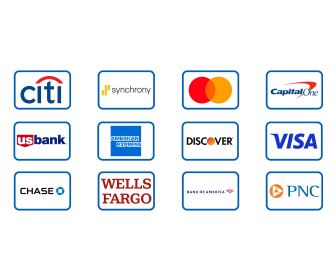Why Your Credit Score Still Sucks — And How to Fix It Fast
You’ve been paying your bills, keeping your balances “reasonable,” and yet your credit score refuses to budge. The truth? The scoring formula is more complex (and more unforgiving) than most people think. Here’s what’s actually dragging it down — and how to turn things around faster than you’d expect.
The Hidden Reasons Your Score Is Stuck
- Your utilization is still too high: Even if you pay every month, carrying more than 30% of your available credit can hurt. The sweet spot? Under 10% is ideal.
- You closed old accounts: Age of credit history matters. Killing that old card you never use might’ve shortened your average age.
- Too many new applications: Each hard inquiry can shave a few points off, and several in a short time can signal risk.
- Missed payments — even one: A single 30-day late mark can sting for years. Payment history is the #1 factor.
- Your credit mix is too narrow: Having only cards or only loans limits your profile. Lenders like variety (installment + revolving).
Quick Fixes That Actually Work
- Lower your utilization fast: Pay down balances before the statement closing date, not just the due date. That’s what gets reported.
- Ask for a credit-limit increase: More available credit lowers your utilization ratio overnight — if you keep spending flat.
- Become an authorized user: Adding yourself to a family member’s long-standing, low-utilization card can boost your history.
- Set auto-pay reminders: Never miss a payment again; consistency outweighs everything else in long-term scoring.
- Dispute old or inaccurate negatives: Use annualcreditreport.com to check reports and challenge legitimate errors.
Habits That Build Momentum
- Keep cards open (age helps your score).
- Pay more than the minimum — your balance trends are tracked.
- Limit new applications to one every few months.
- Use less than 10% of total credit lines regularly.
- Check your credit reports from all three bureaus at least twice a year.
Pro Tip: Credit scores update roughly every 30 days. If you pay down a large chunk mid-cycle, wait for the next report — the jump often shows up after the new statement closes.
The Fast-Track Plan (30-Day Challenge)
- Week 1 – Pull all three bureau reports, note negatives, set up auto-pay.
- Week 2 – Pay down highest-utilization card below 10% of its limit.
- Week 3 – Ask for one credit-limit increase or add an authorized-user line.
- Week 4 – Verify reports updated; schedule monthly checks going forward.
Final Thoughts
Your credit score isn’t stubborn — it’s simply honest about your data. Once you understand what the algorithm rewards (low utilization, on-time payments, long history), improvement becomes predictable. Give it 60–90 days of disciplined action and you’ll start to see measurable change.
Not financial advice. Credit scoring models vary; results depend on your personal credit file. Always confirm details with your card issuer or credit bureau.
Keep reading: How I Earned a Big Sign-Up Bonus in 90 Days · Top 5 Cards to Grab Before 2026



